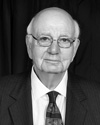QE) to remove bad debt, promote higher asset prices and support financial markets, as well as operation twist to. Monetary policy in the US is conducted by the Federal Reserve. Its two objectives are stable prices and maximum employment.
The main tool that the Fed uses to meet those objectives traditionally has been management of interest rates. It is the best way to control the credit creation of the Banks. What makes monetary policy?
Other articles from investopedia. Unconventional monetary policy at the zero bound. These include credit easing, quantitative easing, forward guidance, and signaling. This topic has not featured prominently in the speeches given by central bankers in recent decades.

It will be easier to grasp it by contrasting it with standard tools. Traditional monetary policy operates via interest rates. In normal times, central banks use open market. This early experiment could probably be more appropriately categorized as conventional monetary policy, rather than unconventional policy.
The Hutchins Center on Fiscal and Monetary Policy examines how well unconventional monetary policies worke and whether central banks should use them in the future. So, the unconventional monetary policy that we are seeing from the RBI is an attempt to correct this anomaly. There is very little the RBI can do about risk premia lenders are charging.

But the RBI can influence the term-premia and liquidity-premia. The ‘operation twist’ launched in December and the long-term repo auctions announced last. We highlight some important differences between quantitative easing and conventional monetary policy and then evaluate the mechanisms through which quantitative easing may propagate to financial markets and the real economy, drawing on perspectives from. The idea of unconventional monetary policy in the global context is not new. Such extraordinary circumstances may not be often repeate in which case, the unconventional monetary policy toolbox may sit on the shelf for some time.
All central banks agree that they found a new way to stimulate economic growth. Using unconventional monetary policy tools, they stimulate parts of the economy difficult to influence otherwise. Therefore, look for the newly discovered set of tools to remain a regular one for setting the monetary policy in the future.
Former chair estimates unconventional policy adds to Fed’s room for manoeuvre. ECB’s OMT and banking union rekindled financial integration – research. Orr: RBNZ ‘thinking hard’ about unconventional policy. Governor says tools not likely to be.
Rogersy Chiara Scottiz Jonathan H. These reforms are essential to ensuring macroeconomic stability and entrenching the recovery, eventually allowing for the unwinding of unconventional monetary policies. The report discusses four unconventional policy tools. The term ‘ unconventional’ monetary policy has now become the conventional shorthand for a wide range of policies, although I am not sure it is the best terminology.
European Central Bank, the Bank of Englan and the Bank of Japan, including a narrative of how central banks responded to the crisis and the evidence on the. NBER Working Paper No.
Comments
Post a Comment